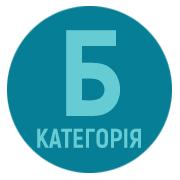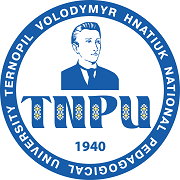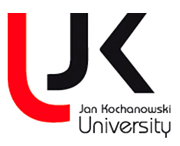INTERTEXTUAL READING OF STEPAN SAPELYAK’S POETRY
DOI:
https://doi.org/10.32782/2307-1222.2025-59-21Keywords:
Stepan Sapelyak, authorial text, poet, dialogue, addressee, intertextuality, intertexteme, paratext, epigraph, title, dedication, marker, biography, recipientAbstract
The intertextual discourse of Stepan Sapelyak’s artistic work is structured at the intersection of various precedent texts in their nature and essence: biblical, folklore, literary, historical, and memoir texts. These texts manifest themselves in different ways, both in individual poems and in his overall body of work. Thus, the reception and transformation of an “external” text as an attributive feature of the poet’s creative self-expression implies its interpretation within the methodological paradigm of intertextuality. The specified optics of the analysis of his lyrics is still in its early stages, which determines its actuality. The aim of this article is to substantiate the ideological-aesthetic and stylistic appropriateness of the poet’s use of intertextual components at various structural levels of the author’s text. Considering theoretical developments in specified field by Ukrainian and foreign literary scholars, we find out the most notable ways of the poet’s communication with other texts, we identify key models of intertextuality in his lyrical narrative, and we explore their contextual semantics. As a result of the analysis of a representative poem selection, the initial hypothesis regarding intertextuality as an immanent feature of Sapelyak’s idiostyle has been confirmed. Among the intertextual markers in his poetry, the most functional forms of paratext have been distinguished: epigraph, title, and dedication. In selecting these elements, the poet draws upon literary sources (H. Skovoroda, T. Shevchenko, Ye. Pluzhnyk, Ye. Malaniuk, O. Dovzhenko, I. Svitlychnyi, V. Stus) as well as memoir sources (diaries, letters). He imbues them with additional potential for penetrating the sphere of the author’s subjectivity, enriching the perception of artistic world synergy. It has been proven that intertextual “inclusions” break the hermetic nature characteristic of the prison genre, leading the recipient and interpreter to explicit/implicit meanings of the text, condensing the boundaries of the poet’s worldview and aesthetic concepts while incorporating factual details of his biography and psychological portrait. The interaction with other texts in Sapelyak’s poetry is multidimensional and consciouslyemphasized. This interaction facilitates the decoding of the author’s creative intent and enables a deeper reading of his work, thus offering contemporary scholars broader interpretative possibilities.
References
Степан Євстахійович Сапеляк – поет, літературознавець, громадський діяч (1952–2012) : біобібліографічний покажчик / уклад.: Т. Добко, М. Пайонк ; відп. ред. Л. Дубровіна ; ред. : В. Вітенко, Т. Добко, С. Кіраль. Київ : ТОВ «Світ Успіху», 2022. 148 с.
Ткачук М. Скорботна пісня України (Творчий портрет Степана Сапеляка). І каміння те стало хлібами <…> : у 3 т. / С. Сапеляк. Харків : Майдан, 2011. Т. 1. С. 9–27.
Скорина Л. «Гомін і відгомін»: дискурс інтертекстуальності в українській літературі 1920-х рр. : монографія. Черкаси : Брама-Україна, 2019. 704 с.
Сапеляк С. І каміння те стало хлібами <…> : у 3 т. Харків : Майдан, 2011. Т. 1 : Поезії. 336 с.
Райбедюк Г. Джерела художньої творчості Степана Сапеляка. Наш український дім : науково-популярний часопис для вчителів. Ніжин, 2012. № 2. С. 9–14.
Райбедюк Г. Поезія Степана Сапеляка: біблійна генеза і авторський текст. Слово і Час. 2012. № 6. С. 29–41.
Шаповал М. Інтертекстуальність: історія, теорія, поетика : навчальний посібник. Київ : ВПЦ «Київський університет», 2013. 167 с.
Ґловінський М. Інтертекстуальність. Теорія літератури в Польщі. Антологія текстів. Друга половина ХХ – початок ХХІ. Київ : ВД «Києво-Могилянська академія», 2008. С. 284–309.
Просалова В. Текст у світі текстів Празької літературної школи : монографія. Донецьк : Східний видавничий дім, 2005. 344 c.
Просалова В. Інтертекстуальний аналіз: теорія і практика : навчальний посібник. Вінниця : Твори, 2019. 176 с.
Яусс Г. Досвід естетичного сприйняття і літературна герменевтика. Київ : Вид-во Соломії Павличко «Основи», 2011. 624 с.
Стус Д. Час поезії. Твори : у 4 т., 6 кн. / В. Стус. Львів : Просвіта. Т. 2. С. 6–10.
Шаповал М. Система координат: типологія міжтекстової взаємодії та маркери інтертекстуальності. URL: https://litmisto.org.ua/?p=18967 (дата звернення: 20.01.2025).
Літературознавча енциклопедія : у 2 т. / авт.-уклад. Ю. Ковалів. Київ : ВЦ «Академія», 2007. Т. 1. 608 с.
Сапеляк С. Тривалий рваний зойк : Поезії. Київ : Радянський письменник, 1991. 189 с.
Шаповал М. Інтертекст у світлі рампи: міжтекстові та міжсуб’єктні реляції української драми : монографія. Київ : Автограф, 2009. 352 с.
Сокол М. Епіграф як паратекст. Studia methodologica. Тернопіль : Редакційно-видавничий відділ ТНПУ ім. В. Гнатюка, 2011. Вип. 31. С. 115–119.
Новиченко Л. Зустрічі і відгуки. Поетичний світ Максима Рильського (1941–1964) / Л. Новиченко. Київ, 1993. С. 196–203.
Стус В. Твори : у 4 т., 6 кн. Львів : Просвіта. Т. 1. Кн. 1. 431 с.
Бердиховська Б. Розмова з Євгеном Сверстюком. Українська мова та література. 2006. Ч. 14–15 (462–463).










